How To Convert A Cargo Trailer Into A Camper
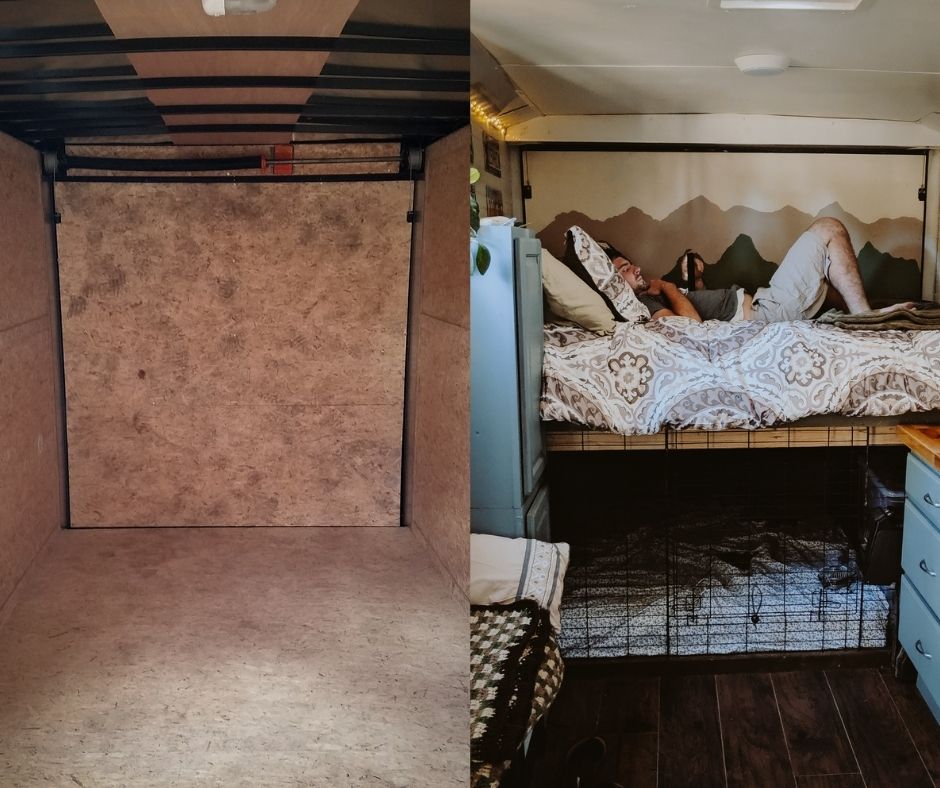
Table of Contents
ToggleA Complete Guide to Building a Cargo Trailer Camper
Have you discovered that it’s possible to convert a cargo trailer into a camper and now you want to make it happen?
Well, look no further. This step-by-step guide will teach you everything you need to know about how to build your own custom off-grid, one-of-a kind cargo trailer camper conversion at an affordable cost.
After countless trips to the hardware store and months of DIY projects, we decided to put together this complete guide of how we made our camper trailer conversion.
Learn how to purchase an enclosed trailer with confidence, design the right floor plan for your lifestyle and understand how to plan and build your own cargo trailer from scratch.
So keep on reading for our suggestions, lessons learned, and some before and after pictures of our enclosed trailer camper project.
We Built Our Dream Camper out of a Cargo Trailer From Scratch
In 2017 My husband bought a utility trailer and began the process of converting it into a self-built camper. Everything from installing insulation and flooring, to building out the shower and mounting a bed and table, he had a tiny home on wheels.
When we met in 2018, we enjoyed traveling around in it together and in 2019, we decided to change the cargo trailer floor plan and renovate it into what we now call our “cargo trailer 2.0” that includes all the things Jake left out on the first round, like running water for the stainless steel sink, a fridge and additional storage space.
Now that we travel full-time in our self-built 16 foot utility trailer camper, we get a lot of questions about our conversion and realized, the resources online for this type of project are lacking. Hopefully, this guide will answer all your questions about converting enclosed trailer to camper.
First of all, What Exactly is a Converted Cargo Trailer Camper?
Cargo trailers, also known as utility trailers or enclosed trailers have many purposes for hauling everything from work tools, to dirt bikes and more. Basically, they protect your belongings from the elements, providing extra security against your valuables being stolen. More recently, it has become common to turn utility trailers into converted campers and using them as toy haulers.
Can you Make a Cargo Trailer into a Camper?
You might be wondering, can you really make a cargo trailer into a camper? Actually, yes! As part of the tiny house movement, more and more people are finding unique ways to turn ordinary things into campers, incorporated with all the amenities of an RV.
Can you sleep in a cargo trailer? 💤
With proper ventilation and a carbon monoxide detector, you can sleep in your diy cargo trailer camper.
Why Convert a Cargo Trailer into a Camper?
So why on Earth did we take a 7×16 cargo trailer and convert it into a mobile tiny home? Simple: Cargo trailers are cheap and durable.
Most are built with a steel frame and give you a blank canvas for a floor plan that can be customized to have exactly what you need. Plus, they are a lot more discreet than your typical RV, Bus, or Van.
What Size Enclosed Trailer do you Need?
The first step in the process is to find an enclosed trailer for sale that meets your needs and that is in your price range.
The most common sizes for converting a enclosed trailer into a camper are five, six, seven and eight feet wide.
As far as length, you can get anything from eight to 32 feet. You can also get them customized to be 6 or 7 feet tall (which is what we did).
Our cargo trailer is 7×16 (112 sq ft) and has enough room for everything we need.
How much does a Cargo Trailer Cost? 💰
Market prices for cargo trailers vary. For a 5×8 single axle cargo trailer, it can cost anywhere from $1,000-4,500. Expect to pay $5,000-15,000 for a 7×16 and bigger dual-axle cargo trailer. Once you know what utility trailer you will be buying, you can plan your camper conversion budget.
What Should I Look for in an Enclosed cargo trailer?
Not all cargo trailers are the same. While they all might look the same from the outside, you will want to pick one that not only fits your needs, but that is durable and built to last. Especially if you plan to camp in it often. Here’s a list of things to consider when doing your research about what enclosed trailer to buy:
- Do you need barn doors or a ramp?
- V nose or Flat nose?
- Look for removable screws for inside walls.
- Get an extended tongue to mount propane tanks
- Make sure your cargo trailer has a side door that can be locked from the inside (not just a back hatch). Installing a door is challenging.
- If custom ordering, ask about taller interior height. Most find 7’ to be ideal.
- Resist the urge to buy off the lot. Custom ordering a basic trailer is very common and you can save yourself a lot of work having the factory do some things like installing windows (but never have them insulated by the factory, you’ll want to do this yourself).
- To go the budget route, you can buy a pre-owned cargo trailer
How much does it Cost to Convert a Cargo Trailer into a Camper?
The cost to DIY convert a trailer to a camper with all the comforts of home can cost anywhere from $5,000-$10,000. However, depending on the size of your enclosed cargo trailer, this number can be higher or lower.
Since most of the cost of your enclosed trailer conversion comes from building material, having a smaller cargo trailer will significantly reduce the amount you spend on your build.
Make your Trailer Conversion Build Plan ⚒️
Before we get into the details of converting a cargo trailer, you need to create a custom floor plan that includes everything that is important to you.
How many people do you plan to sleep? Is a seating area important to you? What does your ideal kitchen include? Will you want fresh water storage tank? Gray water storage tank? Once you have an idea of the elements that are important to you, it’s time to get drawing the perfect cargo camper layout.
For us, we needed to make room for our 3 dogs, so that meant raising the bed. We also wanted a big kitchen because I love to cook, which is why we installed a 6 ft butcher block countertop. Square footage is the only limit when creating your own camper out of a cargo trailer.
Draw Out A Sketch Of Your Cargo Trailer Camper Conversion Floor Plan
Don’t worry about exact measurements, just find some paper and draw a rough sketch of your desired floor plan for your conversion project. Rough sketching helps you decide on a plan that works for you. Here is what our cargo trailer to converted camper floor plan looks like:
Step by Step Guide to Cargo Trailer Camper
Ready to get started on your cargo trailer conversion journey? This step-by-step guide will give you everything you need to know about how to take a blank canvas and build your own custom, one-of-a kind cargo camper!
Step 1: Rip Out Walls
Every enclosed cargo trailer comes standard with plywood walls. They will need to be removed in order for you to insulate and install your electrical system. The plywood on the ceiling will also need to be ripped out.
Step 2: Cut Holes for Windows
Unless you order a cargo trailer with windows, you will need to cut holes and install windows yourself. The great thing about this, is that you get to decide how big of windows you want, and exactly where they will go.
It would be wise to order windows before you cut holes in your cargo trailer. Most windows will come with a template you can use as a guide for cutting the holes. If it is in your budget, order double pane windows. They will help insulate the cargo trailer more efficiently.
Use a jigsaw to cut through the outline you drew on the wall of the cargo trailer. Seal the edges of the opening with a sealant caulking. There are a ton of youtube video tutorials out there to walk you through the process of installing windows.
MATERIALS & TOOLS:
Step 3: Install Insulation
You might be wondering.. Is insulating a cargo trailer worth it? Insulation is incredibly important for maintaining the temperature inside of your cargo trailer conversion camper.
Properly insulating the cargo trailer will help it stay cool in the summer and help prevent heat from escaping in the winter months.
How Do You Insulate An Enclosed Camper Trailer?
The best insulation for an enclosed cargo trailer camper is 2-inch foam board. Look for foam boards that have low VOC. Not only is foam board is easy to use, but it’s resistant to moisture and it can be cut to size.
Cut the foam board to fit in between the wall cavities with a utility knife. Then use HVAC tape to cover all the seams and keep the foam board in place. Most cargo trailers have wall cavities roughly 2 inches deep but be sure to measure before you purchase the foam board. They also come in 1 and 1 ½ inch panels.
MATERIALS & TOOLS:
Step 2: Electrical System
Installing solar is not as complex as you think and provides a reasonable amount of power for the money. Look into solar kits by Renogy. You will need solar panels, charge controller, inverter, wiring and a battery.
One example of such a system would be 600 to 800 watts of solar panels, a high-quality Renogy charge controller, 400 amp hours of lithium-ion batteries (such as the Battle Born or Renogy brands), and a pure sine wave inverter with at least 2500 watts of continuous power output (such as the Victron Energy MultiPlus).
Take a look at our DIY guide on determining the appropriate battery and inverter capacity for your cargo trailer solar kit.
PRODUCTS:
Step 3: Walls
The great thing about cargo trailers is their ability to not feel like an RV. This means you can add shiplap walls, board and batten ceilings. Anything that is lightweight works great!
Step 4: Install Air fans
In order for air to flow properly in your DIY cargo trailer camper conversion, you will need an Air Fan. This will help with climate control, and avoiding inevitable condensation.
Step 5: Floors
Pick flooring that won’t break when the trailer moves. Vinyl plank flooring is a great idea because they have enough flex, yet are extremely durable and easy to install. Plus, vinyl flooring has the visual appeal of hardwood floors at a fraction of the cost.
DIY vinyl flooring requires relatively few tools. To cut vinyl flooring, score the plank with a utility knife and snap it. For more complicated cuts, consider using a jigsaw.
MATERIALS & TOOLS:
Step 6: How to Add Plumbing
Having an efficient water system is necessary for a comfortable utility trailer camping situation in the cargo trailer.
Being able to wash dishes with warm water and take hot showers, all while being in the wilderness, makes your adventures that much more enjoyable. We decided to install a tankless water heater for all of our hot water needs.
However, cargo trailers have low clearance, so it’s difficult to install water tanks underneath.
The easiest way for us to add plumbing to our cargo trailer was to store 6-gallon water jugs with fresh water, connecting them with a water pump that ran to the tankless water heater. You can use a split valve to section off the water for the shower and sink.
By using environmentally friendly biodegradable soaps, the grey water can be disposed of almost anywhere making it unnecessary to have a grey water tank, but ideal to have if you want to be self-contained.
Step 7: Cargo Trailer Camper With A Bathroom 🚽
The easiest way to add an onboard bathroom to your Cargo trailer camper conversion floor plan is to build a shower/toilet combo in the V of the trailer. It’s the best use of the awkward space.
To do this we found a shower pan off Craigs list, framed out walls with pine, stained and sealed them. We added corrugated metal from Home depot and used self-tapping screws to attach it to the pine frame. We installed the tankless water heater next to the shower and ran two separate plumbing lines, one to the shower and the other to the kitchen sink.
We threw a 5 gallon basic toilet used for camping, but wish we had gone with a self-contained composting toilet instead.
To do this, install a shower pan and add your walls. Use a waterproof material like corrugated metal.
Cargo Camping Trailer Pro Tip: Adding a max air fan over the shower helps keep the humidity down and allows the water heater to vent.
Step 8: Cargo Trailer Camper Kitchen
To build the kitchen out on a budget, consider sourcing cabinets or cabinet doors from a second hand store like habitat for humanity. They have a good selection of used cabinets that can easily be sanded down, stained or painted to match. Add your own hardware for a polished look.
For the kitchen countertop, butcher block is a beautiful option. Add a deep bar style kitchen sink to optimize space. We decided to route water from our tankless water heater.
Since space is limited, using a cooktop that can be stored away like a camp chef is ideal so you get the most use of the counter space.
For the fridge, look for a 12-volt mini RV fridge that will fit under the countertop.
Step 9: Mount the Bed
We have seen some creative ways to mount the bed in utility trailer camping conversions.
From Murphy beds, to raised beds, even futons. Depending on your needs, and what you are hauling (dirt bikes, kayaks) the way the bed is situated is totally customizable.
If you get a cargo trailer that is 7 feet or 8 ft wide, you will have more options to mount the bed. Here is an example of how we raised the bed 3ft to create a dog kennel underneath.
Step 10: Seating Area
Depending on the size of the Cargo trailer camper conversion floor plan, you may have room for a seating area.
With small spaces, you need to maximize every inch of it. Which is why we decided to build a murphy desk out of hardwood and slide a bench underneath for seating with additional storage. This is the tutorial we followed to build our murphy desk. Just modify the dimensions to fit it in your space.
We have seen some unique seating solutions in buses and vans. Figure out a seating area that works for you!
Step 11: Flip the Axels for more Ground Clearance
The biggest advantage of an axle flip is that it provides you with more ground clearance. Having a higher trailer means easier navigation through rough terrain. Here is a great step-by-step tutorial to flip your axels.
Step 12: Install an A/C unit
One thing about cargo trailer conversions is that they have a tendency to get sweltering hot in the summer sun. The metal panels on the exterior turns the cargo trailer into an oven on wheels, and if you’re anything like us, we needed a solution to cool it down.
To combat the heat, we decided to install a mini split A/C unit, which are whisper-quiet and provide the coldest air per BTU rating. It made a HUGE difference, and I’m so glad we installed it.
We went with the Senville LETO Series Mini Split Air Conditioner. Its a super compact unit that delivers powerful cooling and heating with its 12000 BTU capacity and 110/120V power requirement.
But, there are other options, including rooftop A/C units, portable air conditioners, and window A/C units. You can read more about choosing an A/C unit for a cargo trailer in our guide!
Lessons Learned
Converting a cargo trailer into a camper comes with its own set of challenges, and every project comes with lessons learned. There are a few things we would do differently and hopefully you will take these things into consideration when you are converting your own cargo trailer into DIY camper.
We would Design a Better Seating Area
After living in the cargo trailer full time for 2 years, we realized that our bench seat is great for eating meals, but not so practical for lounging. We would design something that functions both as a lounging area and a table.
We would Build a Door for our Bathroom/Shower Area
Privacy is important when you live in a small space. I find myself wishing we had installed a sliding barn door to be able to do my business in peace without my husband peeking around the corner saying “whatcha doin?” 🙄
Insulate the Undercarriage with Spray Foam
The vinyl floor in the cargo trailer gets COLD in the winter months. We wish we had done a better job insulating the undercarriage to keep more heat in during the colder months.
Frequently Asked Questions about Converting a Cargo Trailer into Camper 💡
Are converted cargo trailers welcome in RV parks?
Some RV “resorts” do not allow cargo trailers. Before we arrive at ANY RV park or campground, we call ahead and make sure they accept cargo trailers. State campsites and KOAs and other regular short term campgrounds typically don’t exclude cargo trailers. Here’s a hack you can try: rent a tent spot and set up a decoy tent.
Is it Safe to Sleep in an Enclosed Cargo Trailer?
Always install a carbon monoxide detector when sleeping in a cargo camping trailer, don’t let your cargo trailer become your coffin. Sleep with windows cracked and a vent fan on to keep air circulating.
How do you heat a Cargo Trailer Conversion?
We have a Wave 6 Propane Heater. It efficiently uses propane to radiate heat. Make sure to keep a window open when operating this or any other propane heater as they pose a carbon monoxide hazard.
Cargo Camper Essential Gear
Leveling Blocks + Level: No matter where you park your cargo camper, you will most likely be on unlevel ground. We use these leveling blocks at every camp spot we find.
Portable Barbecue Grill: We love grilling outside of out cargo camper. Having a portable grill makes cooking easier!
Cell Phone Booster: Most camp spots have unreliable service. Install a cell phone booster in the cargo trailer.
Folding Table: Even if you have a table in the cargo camper, bring a table with an adjustable height so you can eat outside, play games, etc.
Folding Camp Chairs: Sitting around the campfire or table for dinner means you will need a comfortable chair.
Want to camp for free in your cargo trailer camper? Check out our blog post about apps we use to find free camping, (they are seriously awesome + user friendly) plus everything you need to know about boondocking, what to expect and the exact gear to bring.
Cargo Trailer Camper Conversion Final Thoughts
Hopefully, this comprehensive step-by-step guide has helped you navigate the process of converting a cargo trailer into a self-built camper with confidence. Good luck with your project! We hope to see your conversion on the road! Check out our original 7×16 conversion blog post here.
Do you have any helpful advice for converting a cargo trailer into a camper? Tell us in the comments below!
We would LOVE to see your builds. Tag us in your photos on Instagram.
More Cargo Trailer Conversion Guides
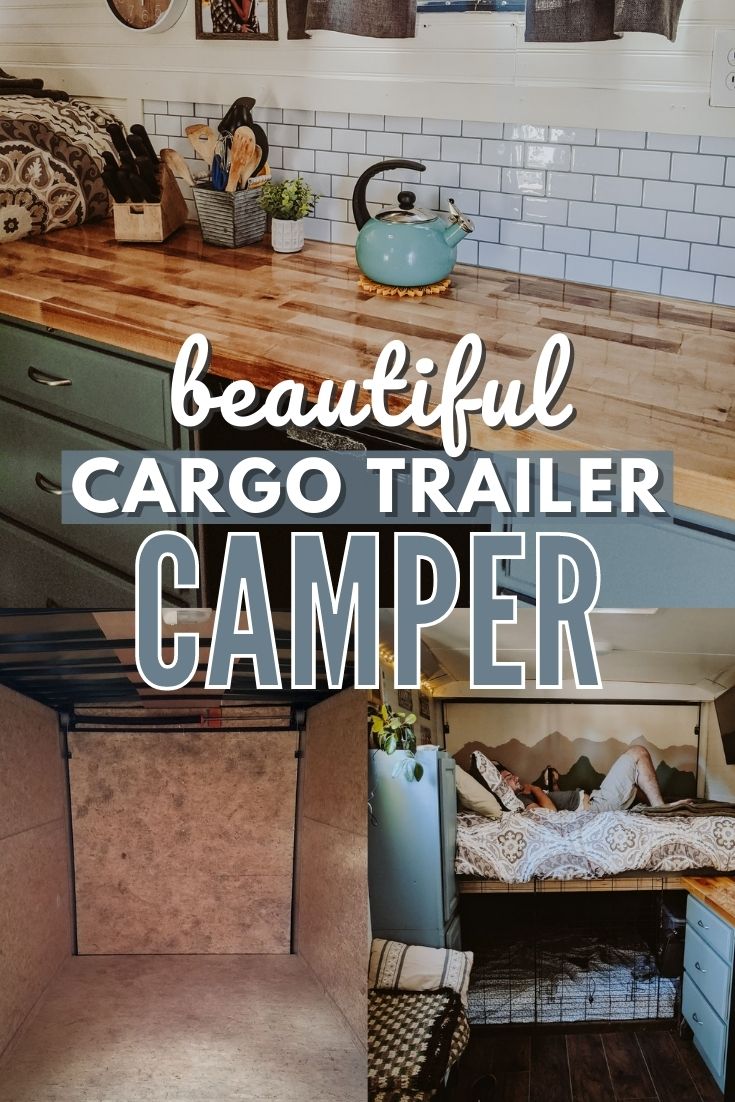


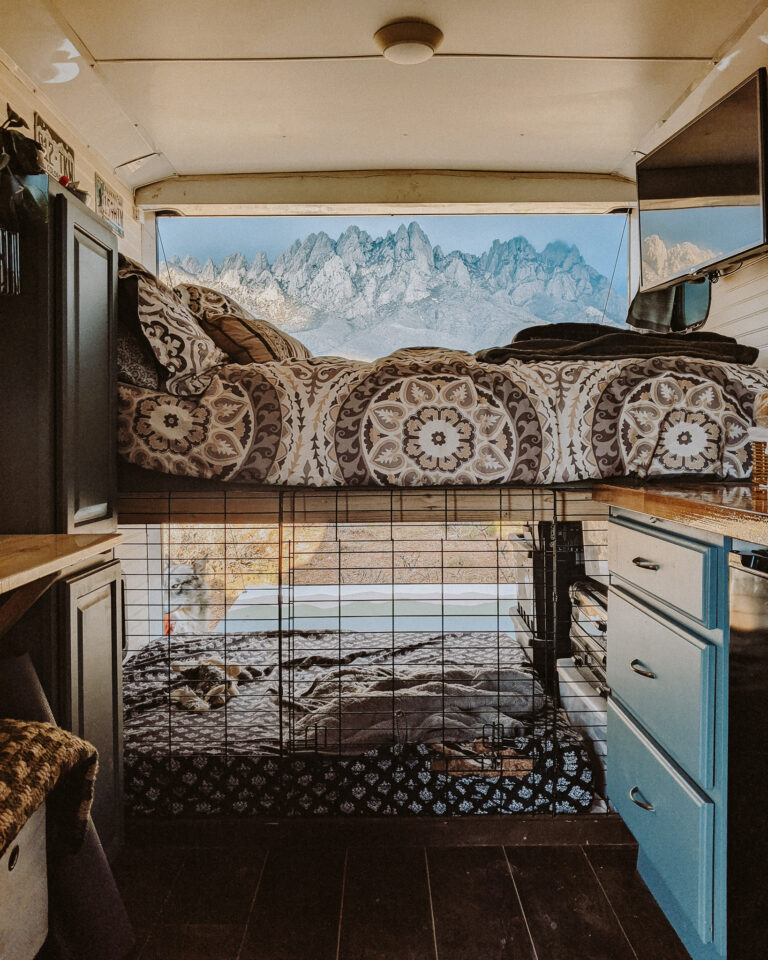
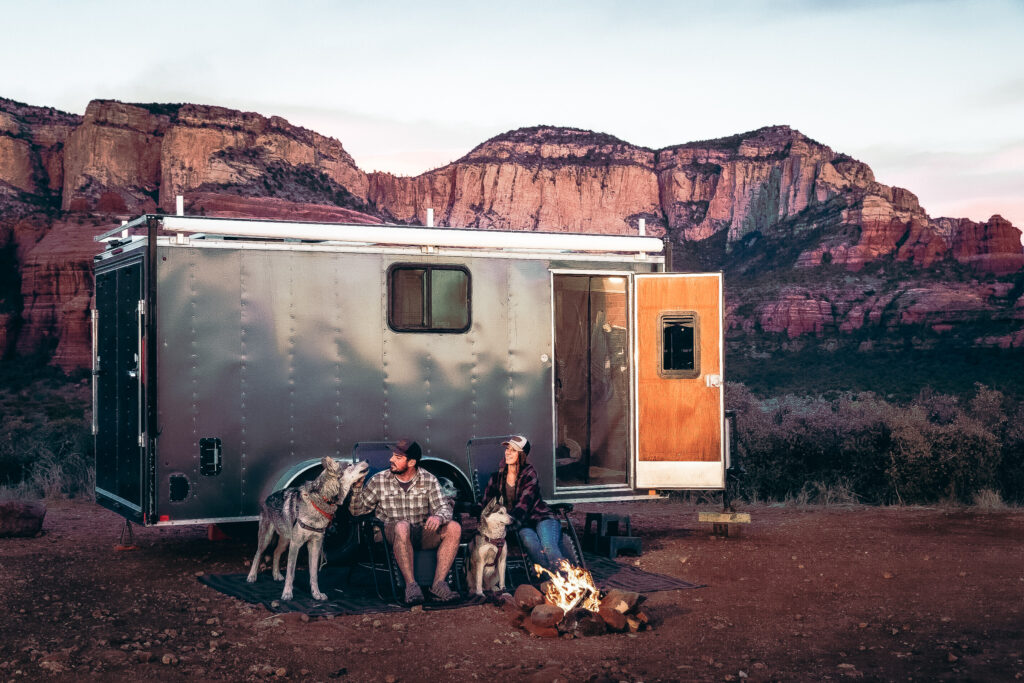
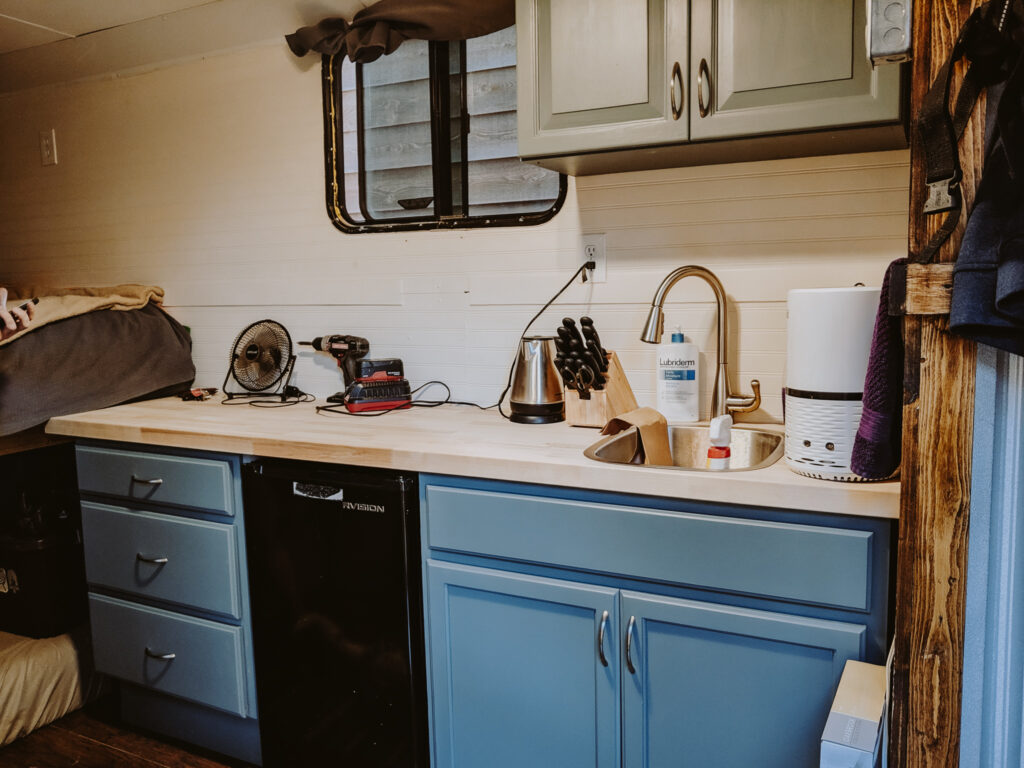
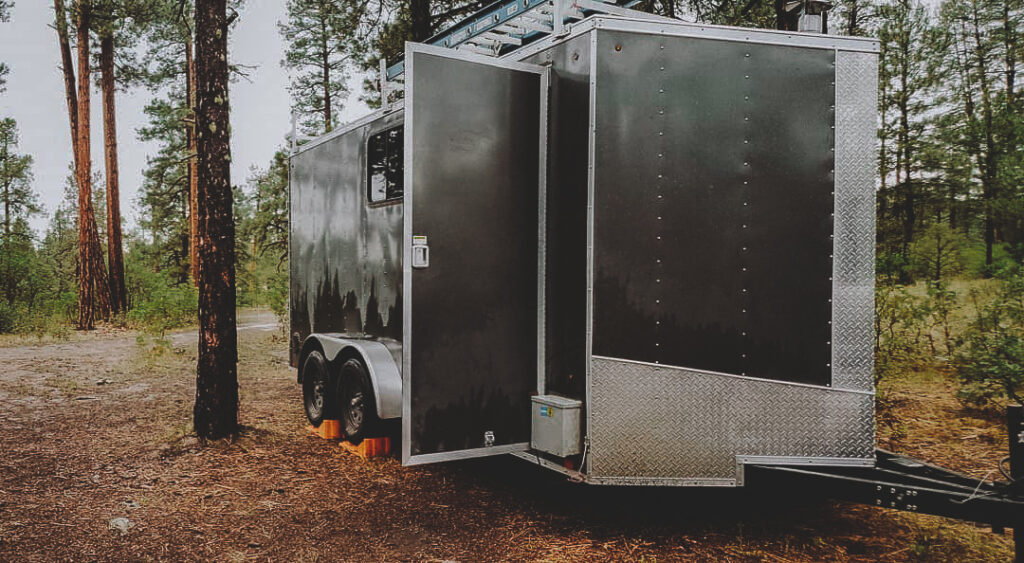


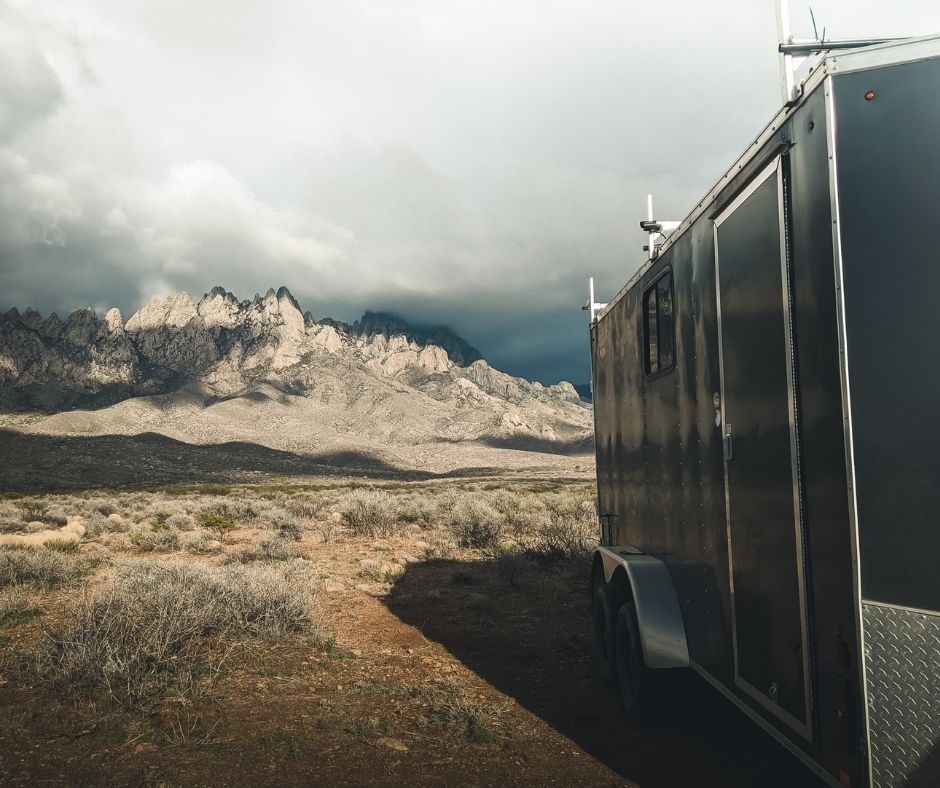

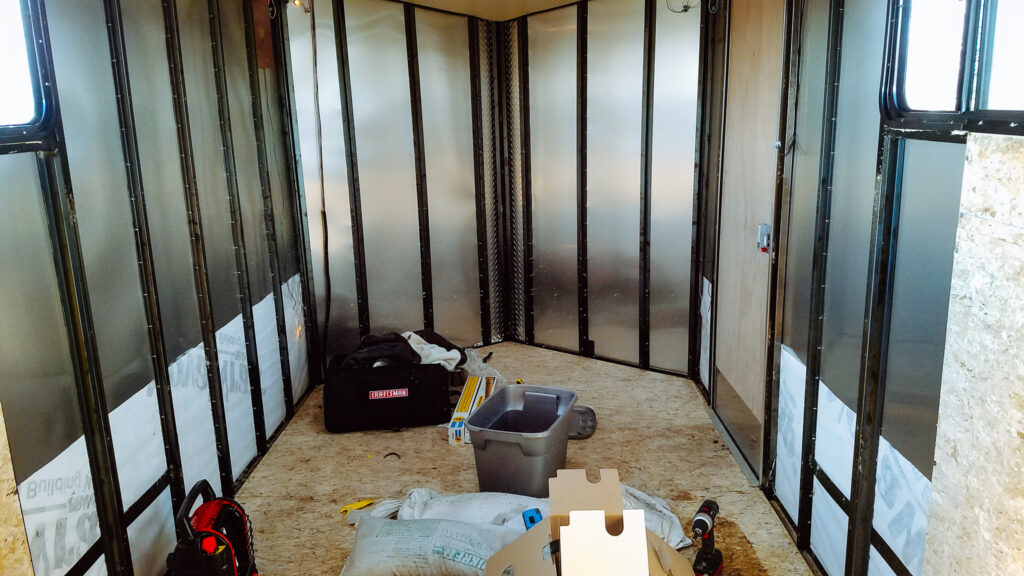
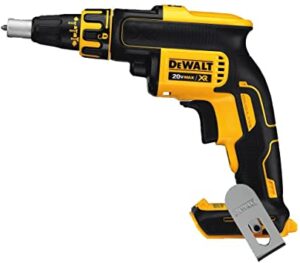
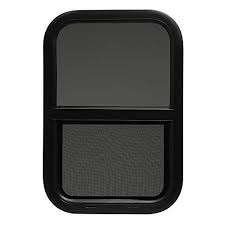
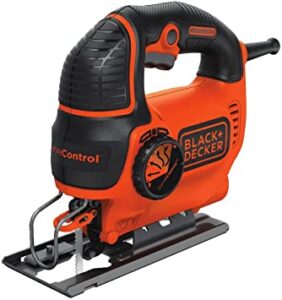
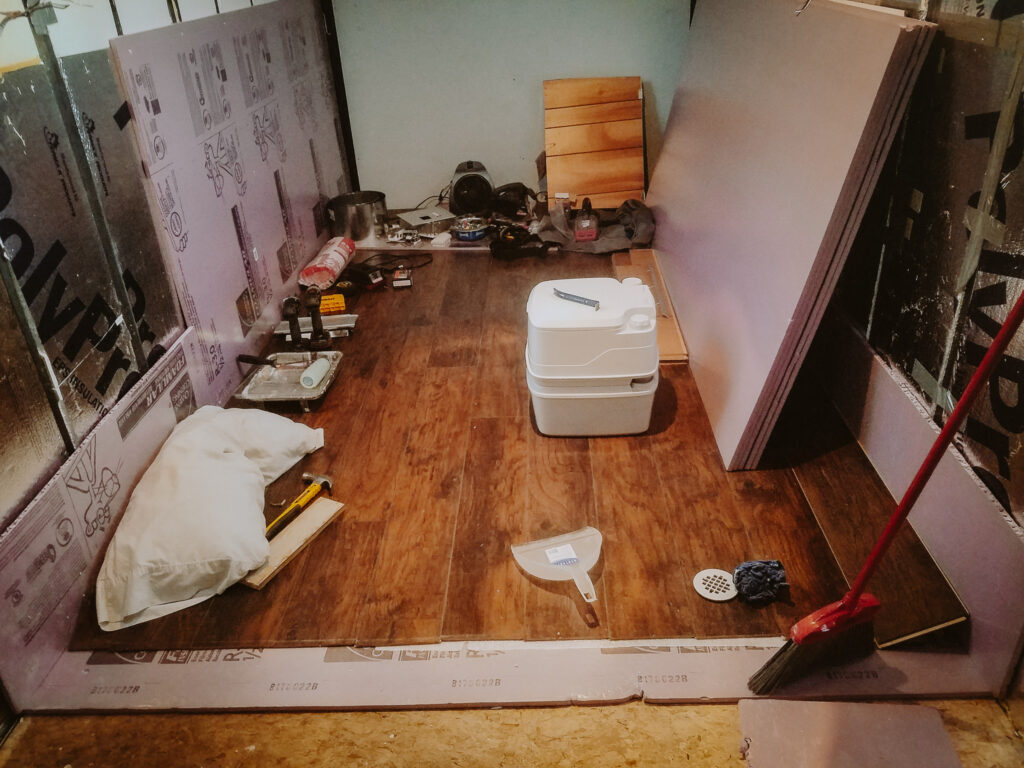


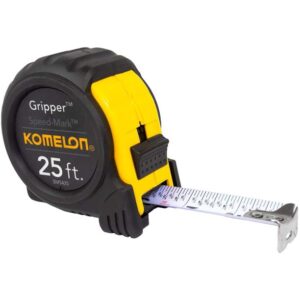
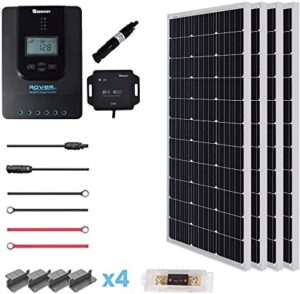
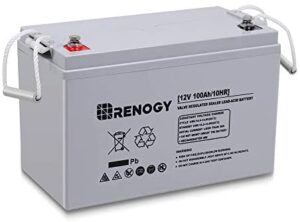
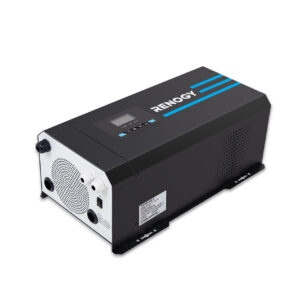
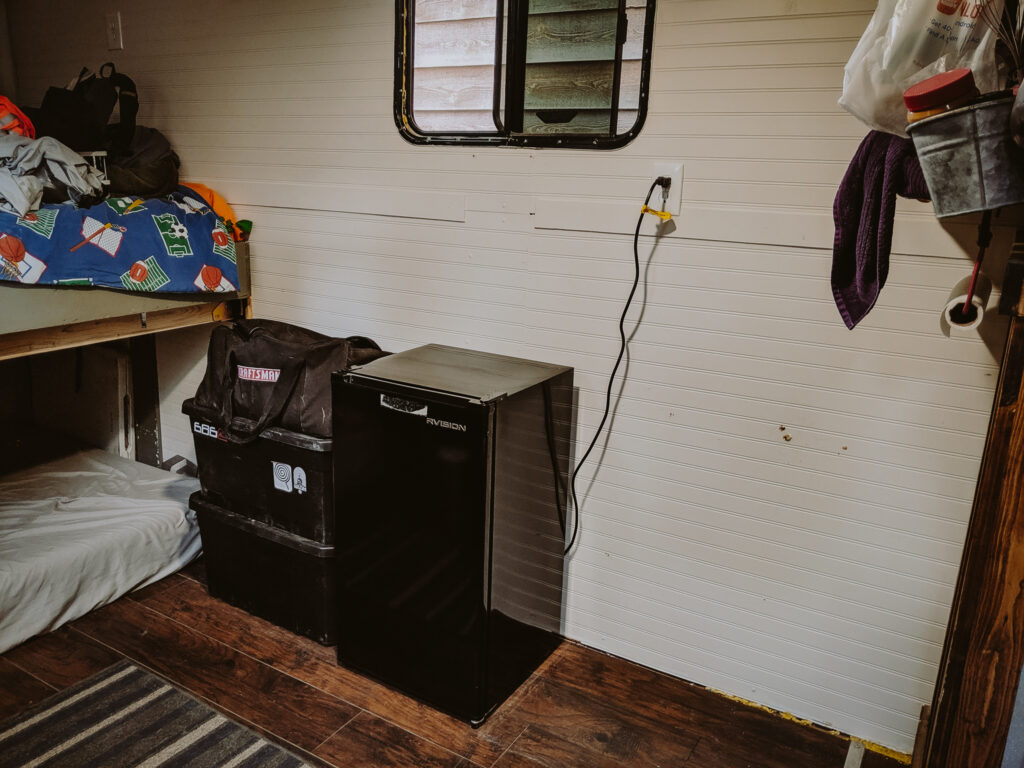
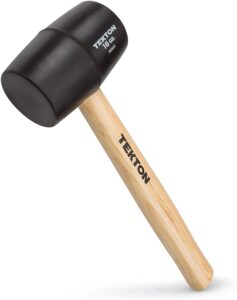
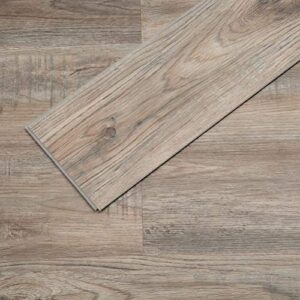
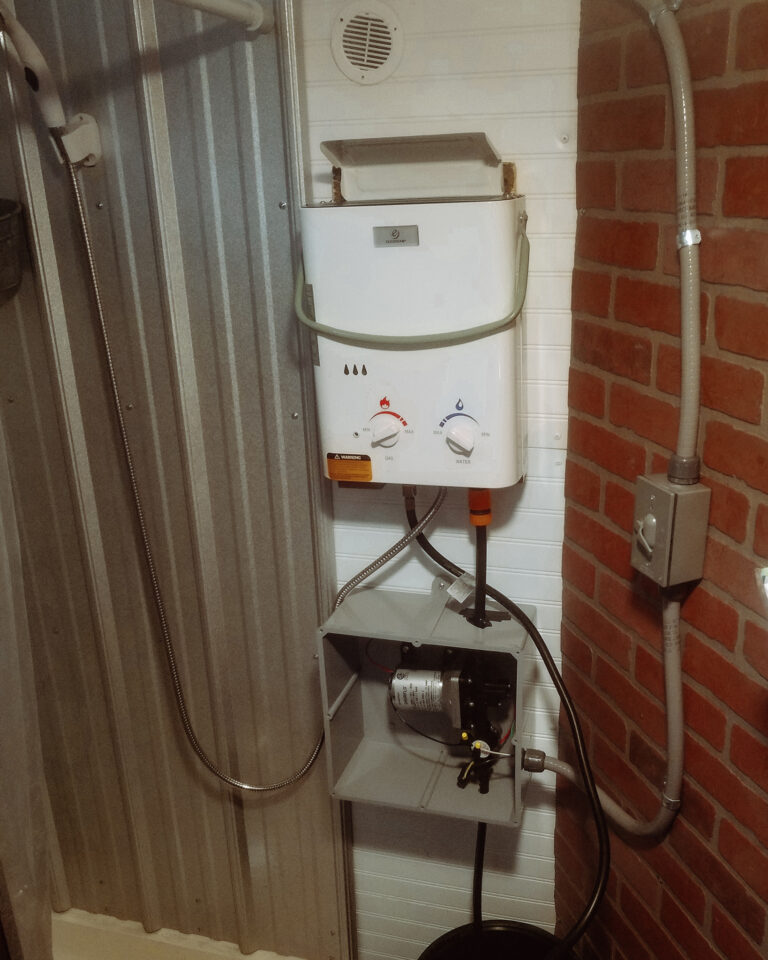
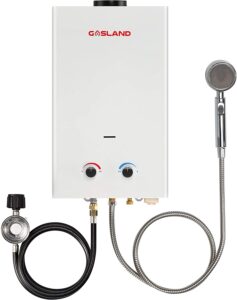
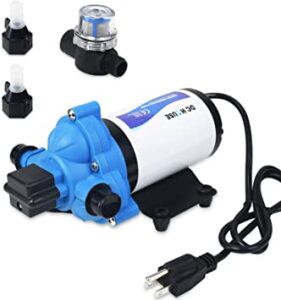
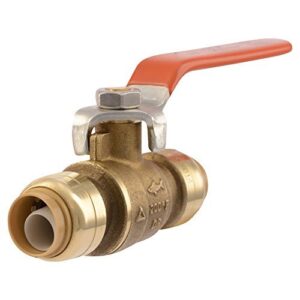
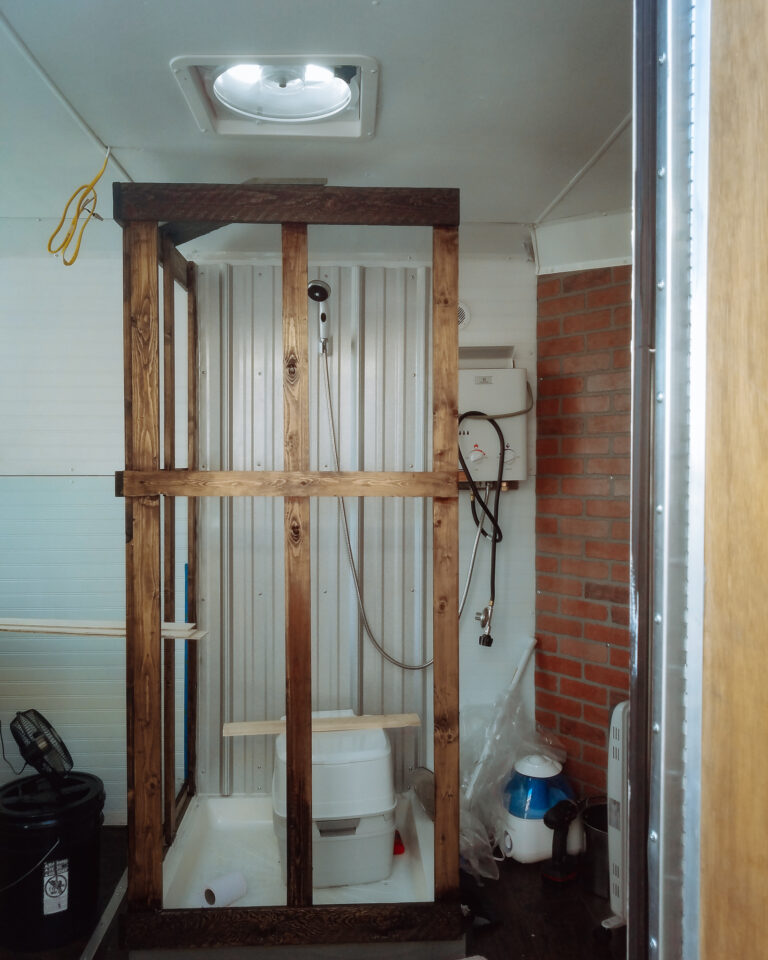
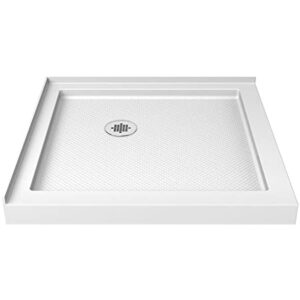
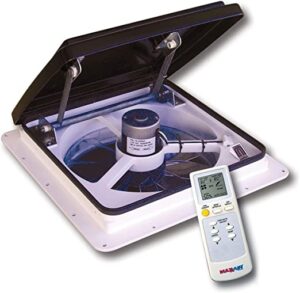
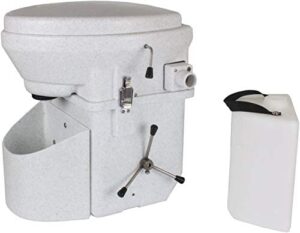
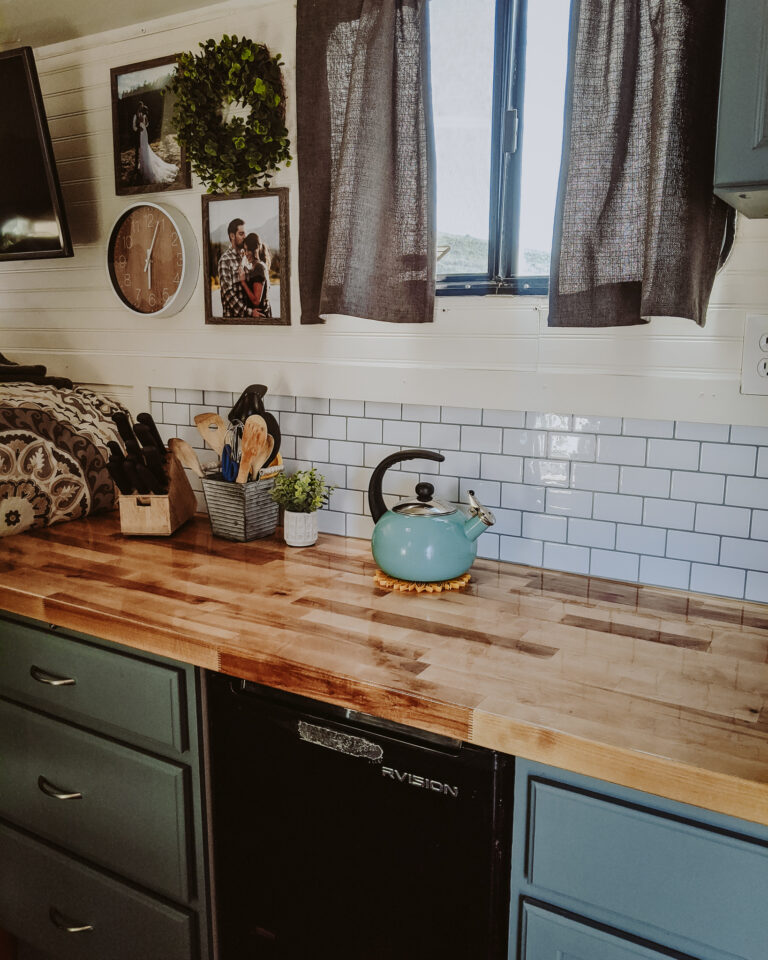
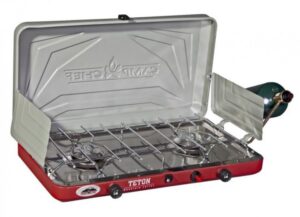
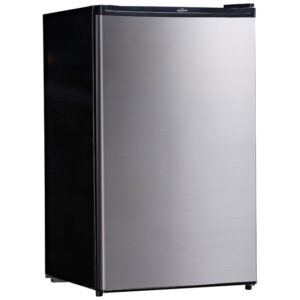
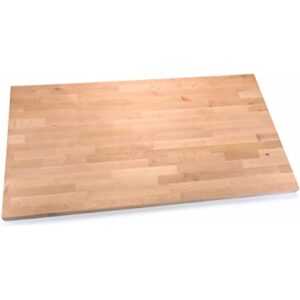
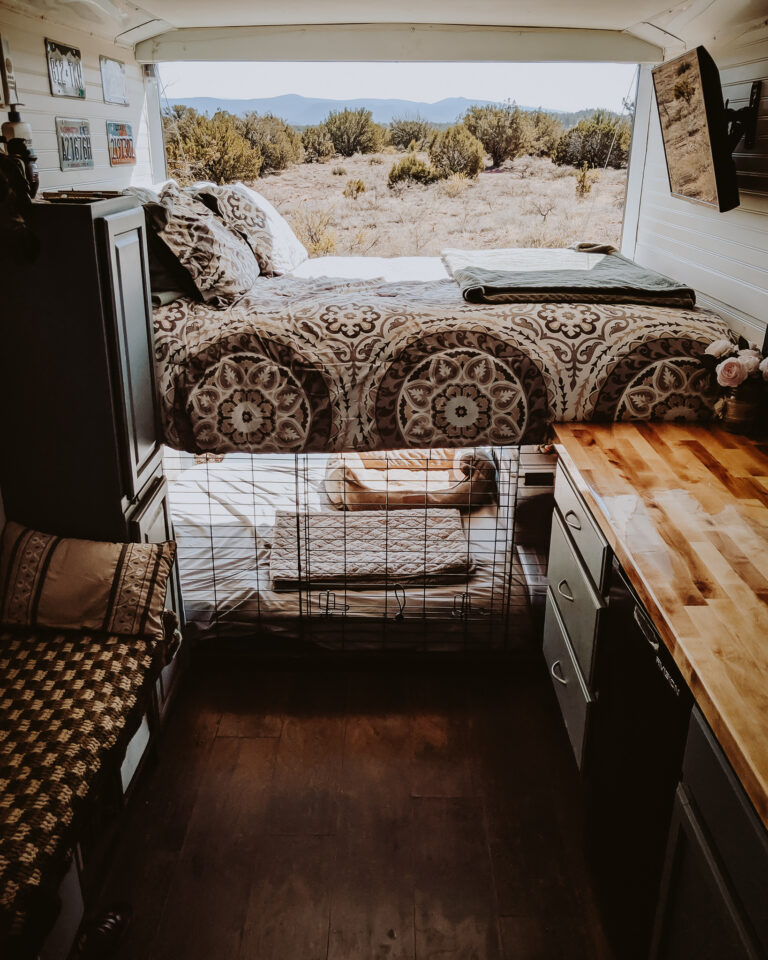
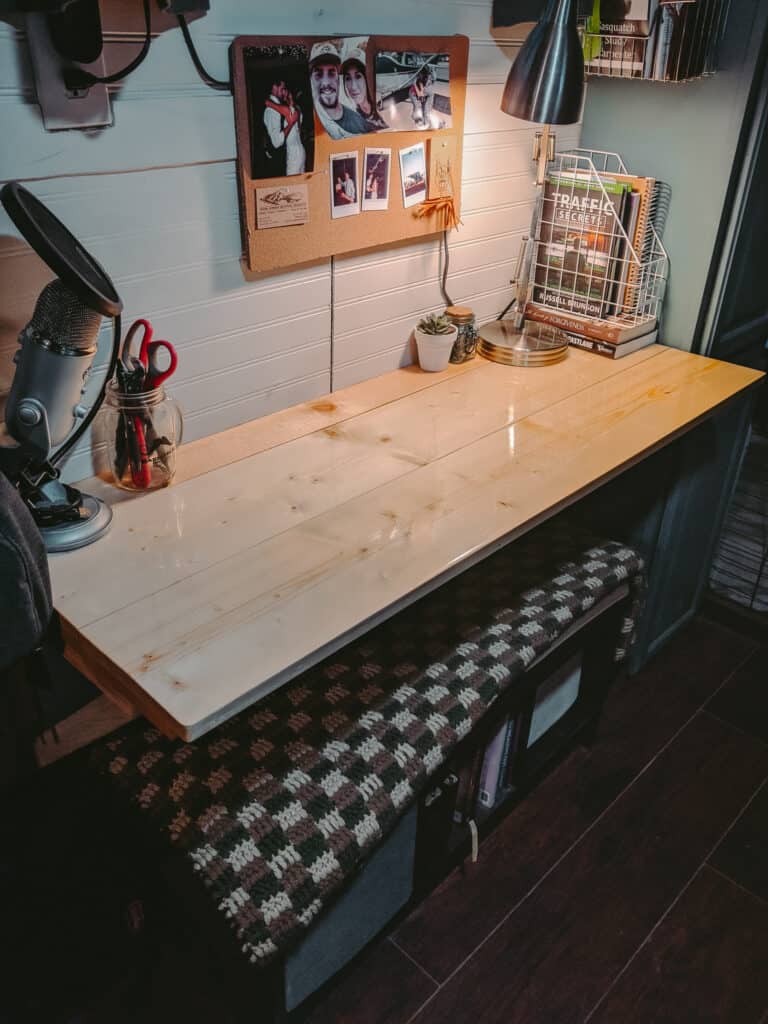
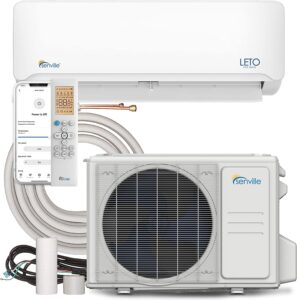
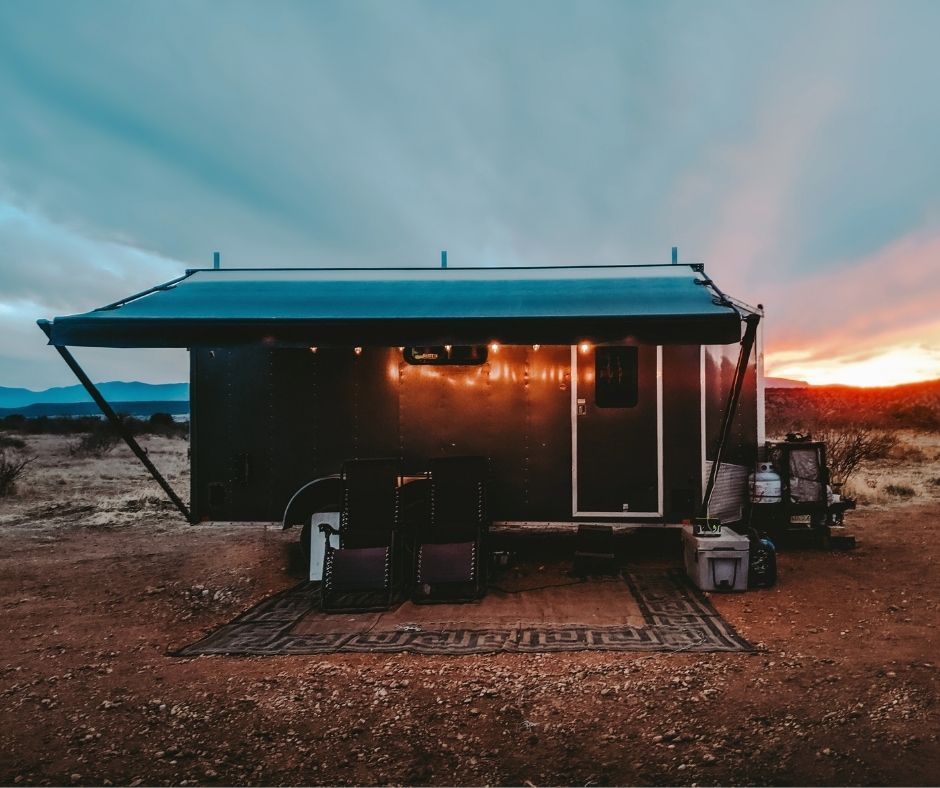
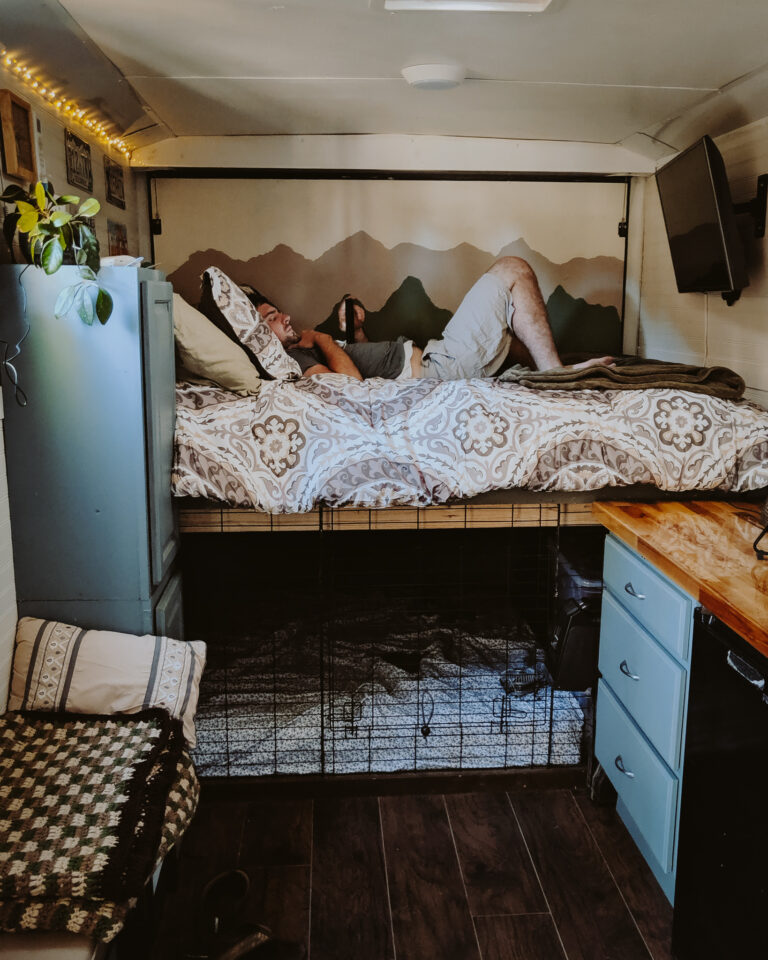
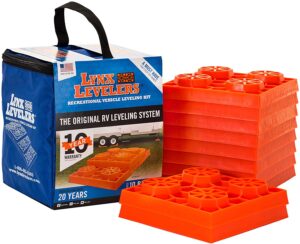
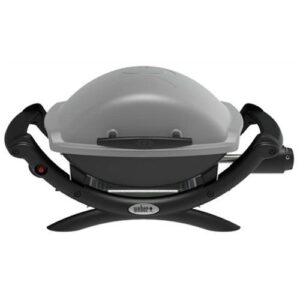
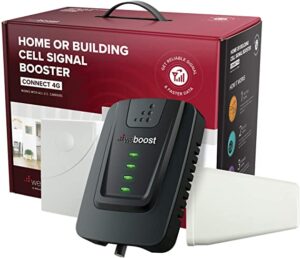
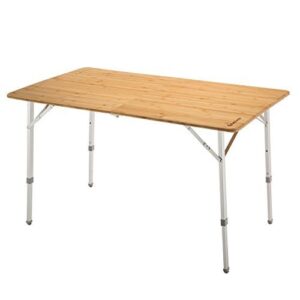
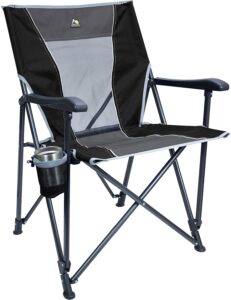


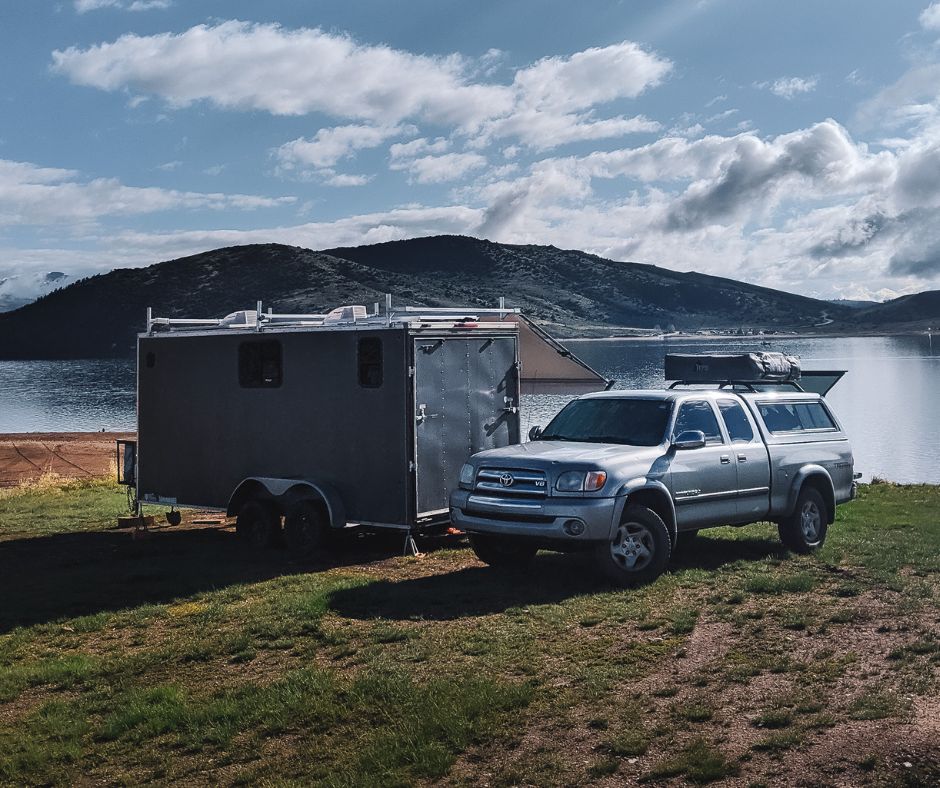
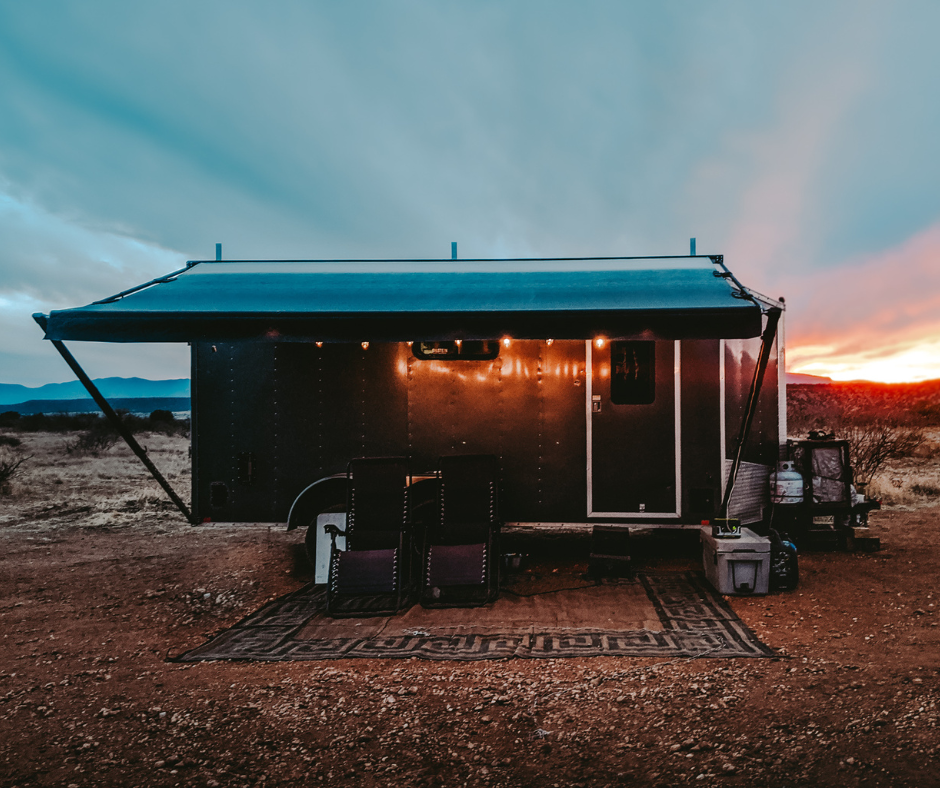
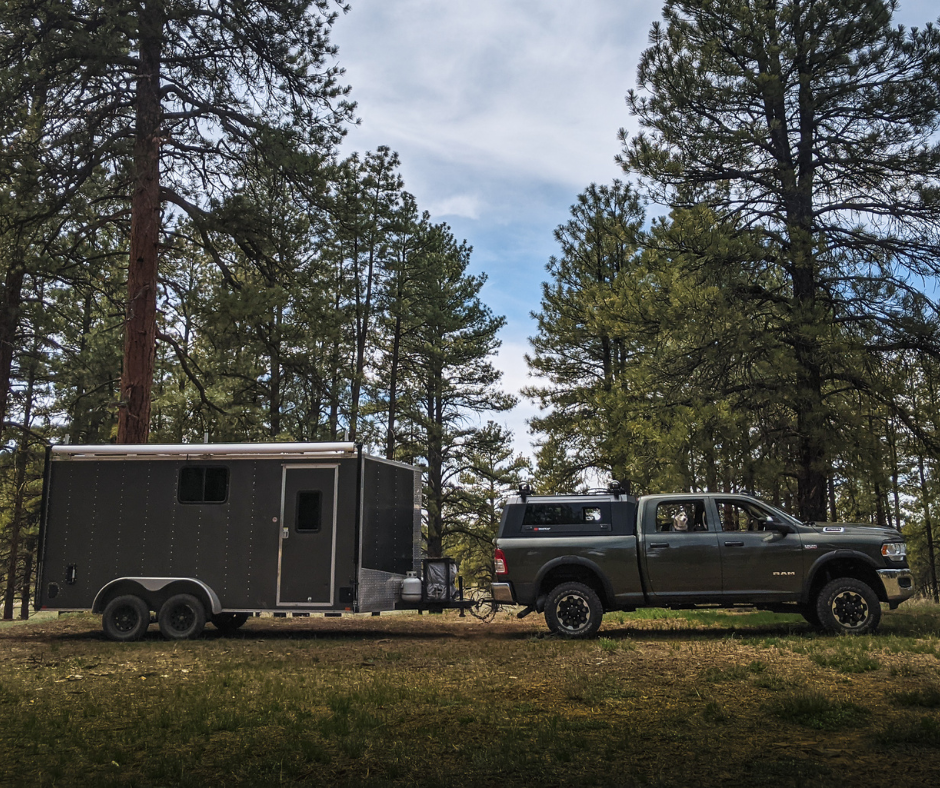
Can you tell me how you secured the cabinets to the trailer walls?…..
could a 2×4 be glued on bracing, insulation, glue 2×4’s, install electrical and then cover with light weight bead board like you used?
thanks for sharing!
We used self-tapping screws and attached the cabinets to the metal frame of the cargo trailers. I would not attach them to glued-on 2x4s, those will fall off on bumpy roads and could cause some damage.
Thank you for this write up. It was very helpful. What was the weight of the trailer before your conversion and what is it after?
WOW NICOLL & JAKE IMPRESSIVE BLOG POST & Awesome conversion, very detailed. We have Cargo Trailers for sale in Georgia. If you are in need of another trailer in the near future for a conversion or even parts & repair on your current one we would be more than glad to help out otherwise super cool and appreciate you sharing!
I myself have a 6×12 enclosed V nose that was purchased for work, but we dont really use it for work, it was used more to store my sled, but since that is now gone I am really considering converting it into a camper. Thank you for the great ideas. My mind is racing and can’t wait to get this project started.
Awesome! I’m glad we’ve inspired you to convert your cargo trailer into a camper! Best of luck! Let us know if you have any questions 🙂
Thanks for sharing a great job on this cargo conversion. As far as the toilet of 7×14 cargo trailer, I think a compost toilet might be the best opt.
Totally agree! If we could do it all over again, a compost toilet would be our choice!
Hello
What are your thoughts on a cassette toilet ?
That would work too! Especially if you get one that can hold more than 5 gallons.
You mentioned that converting the man door can be difficult but did not otherwise give any info. This is something my husband and I are currently trying to research. We like RV doors (where the screen door is built into the regular door, making it easy to choose which one to use) but they’re rounded, while cargo trailer doors are squared off. Any suggestions on converting? Does anyone make RV doors specifically to replace cargo trailer man doors? Thanks for the awesome write up!
Thanks for your comment and for enjoying our write-up! As you mentioned, RV doors typically have a built-in screen door and a rounded design, whereas cargo trailer doors are squared off. Converting the door to match an RV-style design can be a complex process, as it may involve modifications to the frame and structure of the door. Unfortunately, we don’t know of any RV doors made specifically to replace cargo trailer man doors, but one suggestion we have is to explore the option of installing an RV lock on your existing cargo trailer door. An RV lock can provide added security and convenience, even if the door itself remains square-shaped. Another option to consider using a magnet screen on your existing cargo trailer door. It’s a convenient alternative that provides a screen door function without requiring extensive door replacement. We hope this information helps you in your research, and we wish you the best of luck with your project!
This is inspiring with the whole step process. I have a 2022 Vnose 7×14 and I’m definitely gonna convert it into an everyday living, camping, and traveling camper. Thank you guys!!!
We’re really happy that you found it helpful! Good luck with your conversion project, and make sure to come back soon for more helpful cargo trailer conversion posts that we’re currently working on!
When you camp, you are likely to encounter lightning storms. I would think a steel cargo trailer would serve as a Faraday cage protecting you from electrocution. However, it would be interesting to hear from an electrical engineer regarding any unthought risks.
I bring this up because I have a fiberglass canopy on the back of a pickup. It would not protect me, nor would fiberglass travel trailers from what I understand.
Enjoy your camping.